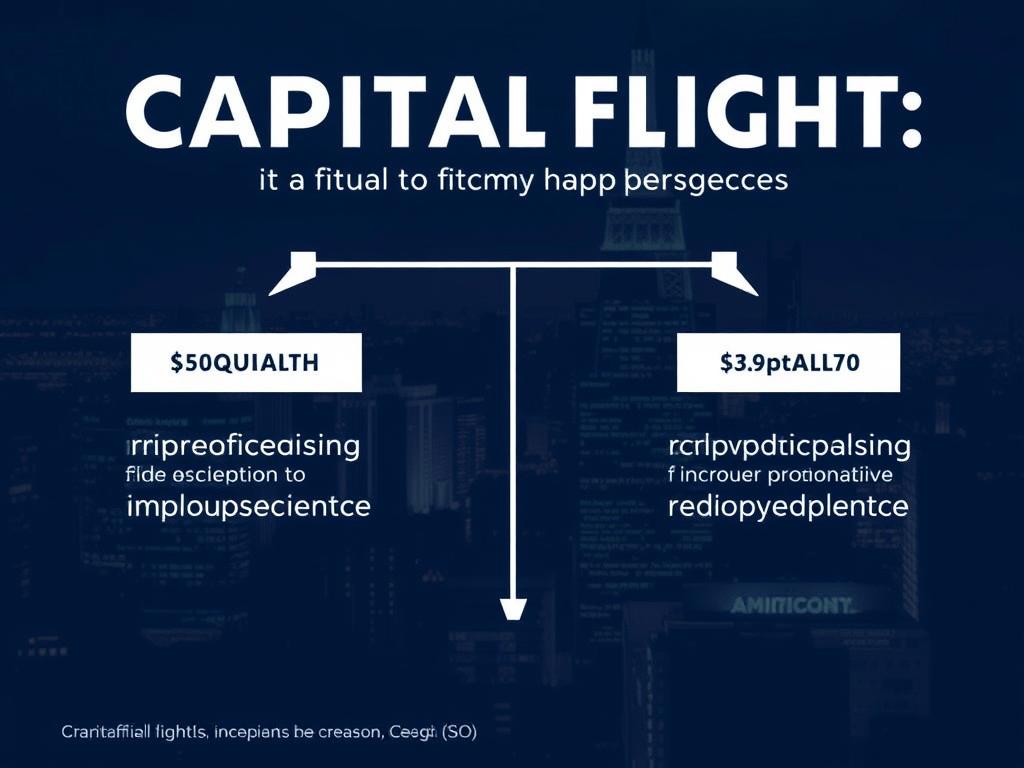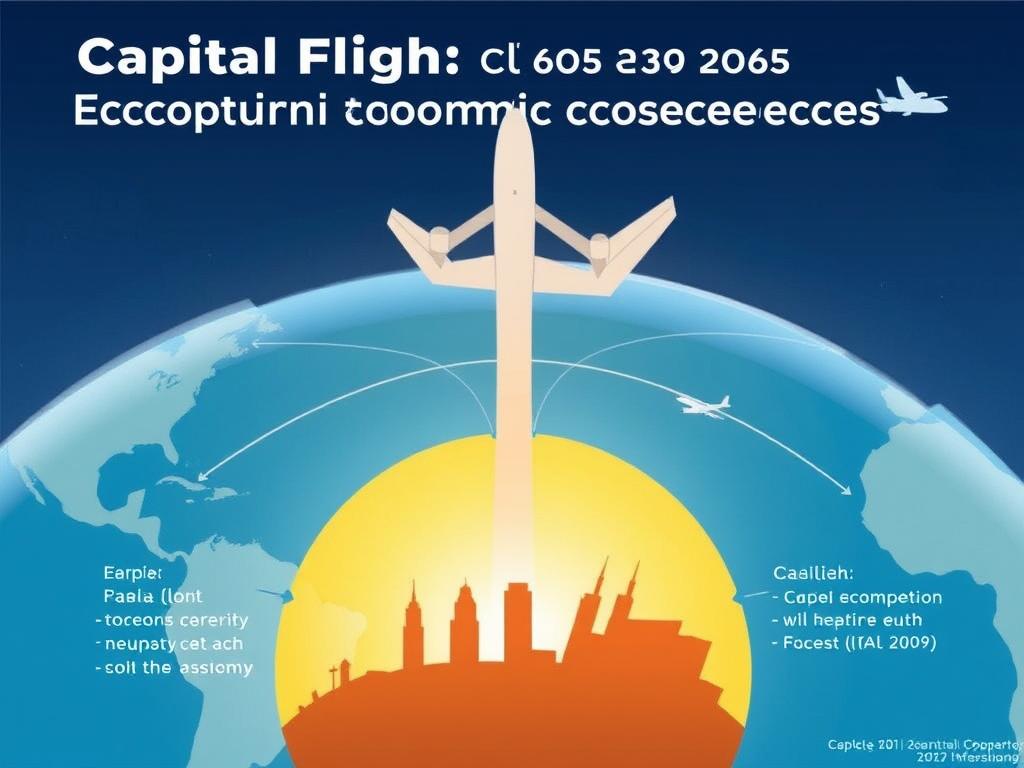Capital Flight: Causes and Economic Consequences
Capital flight is a term that you might have heard in news reports or financial analyses, but what exactly does it mean, and why should anyone care about it? In simple terms, capital flight occurs when money or assets rapidly leave a country, often moving to safer or more stable economies elsewhere. This phenomenon is complex and has deep roots in both political and economic spheres. Understanding the causes and economic consequences of capital flight is essential for grasping how it shapes national economies and impacts everyday people. Let’s take a closer look at what drives capital flight and what it means for countries trying to maintain economic stability.
What Triggers Capital Flight?
The flight of capital does not happen without reason. It is driven by a combination of push and pull factors that compel investors, companies, and even ordinary citizens to move their wealth out of one country and into another. Among the most common causes of capital flight are political instability, economic mismanagement, high inflation, and fears of confiscation or currency devaluation.
Political instability often tops the list. When governments change abruptly, when civil unrest breaks out, or when there are threats to property rights, investors become nervous. They start to worry: “Is my money safe here?” This uncertainty can trigger a rush to pull funds out before it’s too late.
Similarly, economic mismanagement, such as uncontrolled budget deficits, excessive borrowing, or reckless monetary policy, can erode confidence in a country’s economy. High inflation rates reduce the value of money saved locally, pushing holders of wealth to seek more stable currencies and investments abroad. Additionally, uncertainties regarding taxation or the risk of asset seizures make capital flight a logical, though often desperate, response.
Pull Factors: Why Do Capital Flows Choose Their Destinations?
Not only do troubled economic and political conditions push capital out, but attractive features in other countries pull the capital in. Secure and transparent legal systems, stable currencies, effective regulation, and opportunities for higher returns on investment make certain countries magnets for fleeing capital.
In many cases, offshore financial centers or stable economies with strong property rights protection act as safe havens. Tech-savvy financial instruments and international banking secrecy also play roles in directing capital to these preferred locations.
How Capital Flight Impacts the Economy

When money leaves a country at a rapid pace, the consequences can be severe and far-reaching. To understand these economic consequences, it helps to visualize the situation through a table, summarizing the main impacts:
| Economic Impact | Description |
|---|---|
| Currency Depreciation | As foreign capital exits, demand for the local currency falls, leading to a weakened exchange rate, which can increase import costs and inflation. |
| Reduced Investment | Capital flight reduces the funds available for local investment, hampering economic growth and development. |
| Fiscal Pressure | Lower capital inflows mean less tax revenue, increasing the strain on government budgets and potentially leading to austerity measures. |
| Banking Sector Instability | Rapid withdrawal of funds can weaken banks, triggering liquidity crises or failures. |
| Worsened Inequality | Often, capital flight is orchestrated by wealthy elites, exacerbating wealth inequality and social tensions. |
Currency Depreciation and Inflation: A Vicious Circle
One of the most immediate effects of capital flight is a drop in the value of the local currency. When investors exit, they convert their money into foreign currencies, which increases the supply of the local currency on international markets. This causes the currency to weaken. For countries that rely heavily on imports, a weaker currency means that imported goods become more expensive, driving inflation higher.
This inflationary pressure can erode purchasing power, reducing the standard of living for ordinary citizens. The government might feel compelled to raise interest rates in an attempt to stabilize the currency, but such actions often stifle economic growth further.
Who is Most Affected by Capital Flight?
Capital flight doesn’t just impact abstract economic indicators; it hits real people’s lives. Different segments of society experience the fallout in different ways:
- Ordinary Citizens: Inflation and economic instability can reduce real incomes and increase unemployment risks.
- Small Businesses: Limited access to credit and investment hampers growth and job creation.
- Governments: Reduced tax revenues constrain public services and infrastructure spending.
- Financial Institutions: Banks and lenders face liquidity shortages and increased risk of collapse.
Capital Flight and Inequality
It is worth noting that capital flight often benefits wealthy individuals and multinational corporations who have the means and connections to move capital swiftly. This dynamic exacerbates inequality, as poorer citizens bear the brunt of economic downturns brought on by capital flight, while elites shield their wealth elsewhere. Societies experiencing this divide can face growing social and political tensions.
How Can Countries Prevent Capital Flight?

Policymakers are well aware of the dangers that capital flight poses, so what measures can they take to prevent or at least reduce it? Here are some common strategies and considerations:
- Strengthening Political and Economic Stability: Transparent governance, respect for property rights, and sound fiscal policies build investor confidence.
- Improving Monetary Policy: Controlling inflation and maintaining a stable currency help reduce the incentive to move money abroad.
- Capital Controls: Some countries try to limit the movement of capital across borders through regulations, though these measures can have mixed results.
- Enhancing Financial Sector Regulation: Making banks more resilient and increasing oversight mitigates the risks of bank runs and liquidity shortages.
- Encouraging Domestic Investment: Providing tax breaks, incentives, and improved business environments attracts and retains capital.
While some capital controls may discourage flight, such restrictions may also hinder legitimate international business and investment. Therefore, most experts argue that improving fundamentals—political stability, good governance, and economic prospects—is the most sustainable way to manage capital flight.
Historical Examples of Capital Flight
Understanding capital flight can be clearer when viewed through real-world examples. Here are a few notable cases:
- Argentina in the Early 2000s: Faced with economic crisis and political uncertainty, billions left the country, exacerbating recession and currency collapse.
- Russia after the 1998 Crisis: Following financial turmoil and political instability, capital flight severely weakened the ruble and economy.
- Venezuela in Recent Years: Economic mismanagement, hyperinflation, and political turmoil have driven massive capital flight.
These case studies showcase the devastating effects capital flight can have on a nation’s economy and social fabric.
Globalization and Capital Flight

In the modern world, globalization has made capital flight both easier and more common. The rise of digital banking, international financial centers, and complex multinational structures allows capital to move across borders almost instantaneously. While this flexibility can bring economic benefits by improving the efficiency of capital allocation, it also poses increased risks when countries face sudden economic or political shocks.
Key Takeaways About Capital Flight
To summarize the critical points about capital flight, consider this quick reference table covering causes and effects:
| Aspect | Explanation |
|---|---|
| Causes | Political instability, high inflation, weak institutions, fear of asset seizure, economic mismanagement. |
| Triggers | Regime changes, financial crises, policy uncertainty, capital controls, corruption. |
| Consequences | Currency depreciation, inflation, reduced investment, fiscal strain, inequality rise. |
| Prevention | Stable governance, sound fiscal and monetary policies, improved business climate, financial regulation. |
Conclusion
Capital flight is a powerful force that reflects deep insecurities within an economy and a political system. Its causes range from political upheaval to economic mismanagement, and its consequences ripple through currency markets, investment flows, and social stability. While capital flight presents significant challenges, understanding its dynamics offers valuable insight into why some economies struggle despite vast resources. Ultimately, countries seeking to curb capital flight must focus on building trust, stability, and sound economic policies that encourage investors to keep their money at home. The stakes are high—not only for national economic health but for the wellbeing of everyday citizens who bear the brunt of economic instability sparked by sudden outflows of capital.







